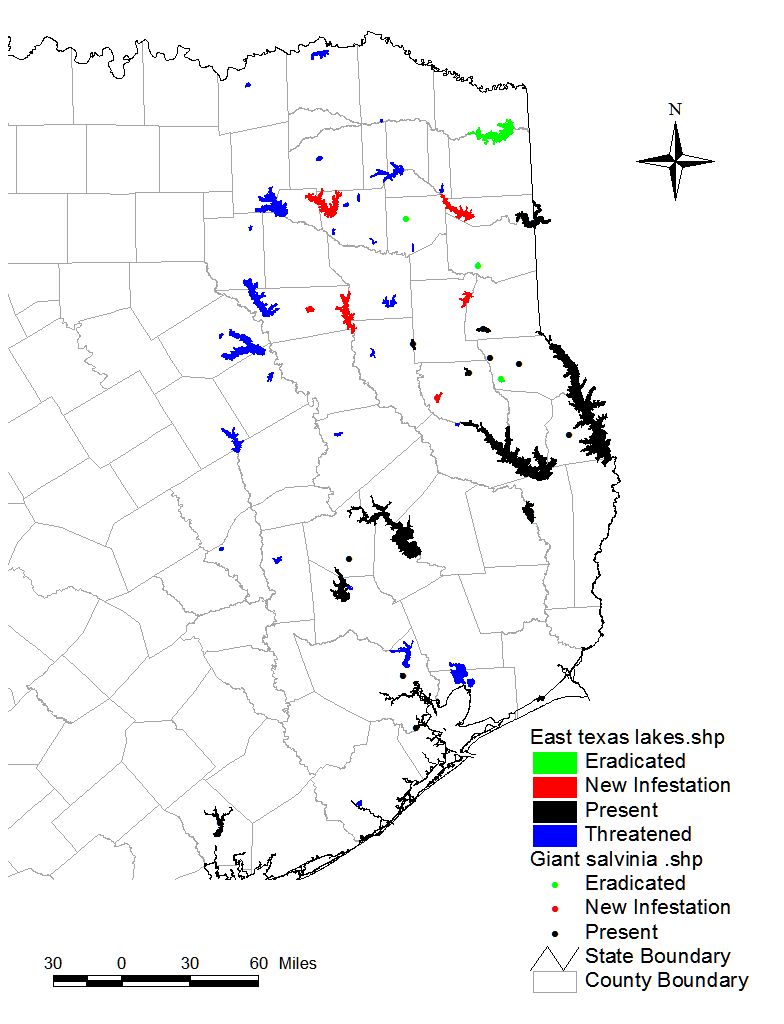An "invasive species" is defined as a species that is non-native (or alien) to the ecosystem under consideration and whose introduction causes or is likely to cause economic or environmental harm or harm to human health.
An invasive species grows/reproduces and spreads rapidly, establishes over large areas, and persists. Species that become invasive succeed due to favorable environmental conditions and lack of natural predators, competitors and diseases that normally regulate their populations.
This includes a wide variety of plants, insects and animals from exotic places. As invasive species spread and take over ecosystems, they decrease biodiversity by threatening the survival of native plants and animals. In fact, invasive species are a significant threat to almost half of the native U.S. species currently listed as federally endangered.
There are a number of invasive species present in the Cypress Basin. The one that is having the most impact is Giant Salvinia. This plant is present in Caddo Lake and Lake O the Pines. For more information about this plant please click HERE.
The 2018 map below shows which East Texas lakes have or had Giant Salvinia in them


 map
map